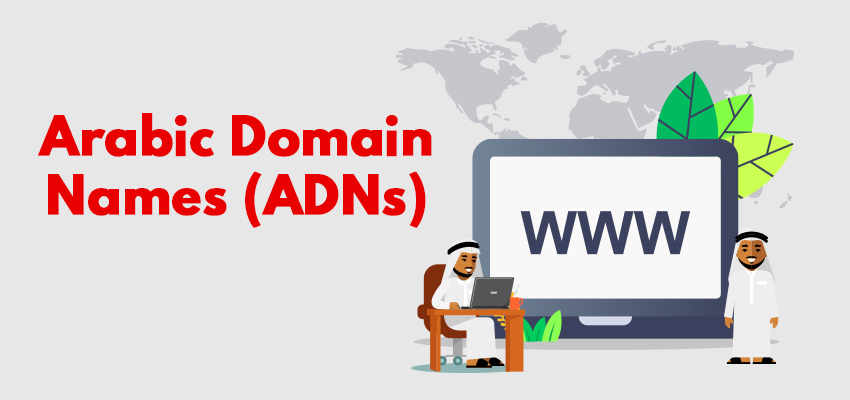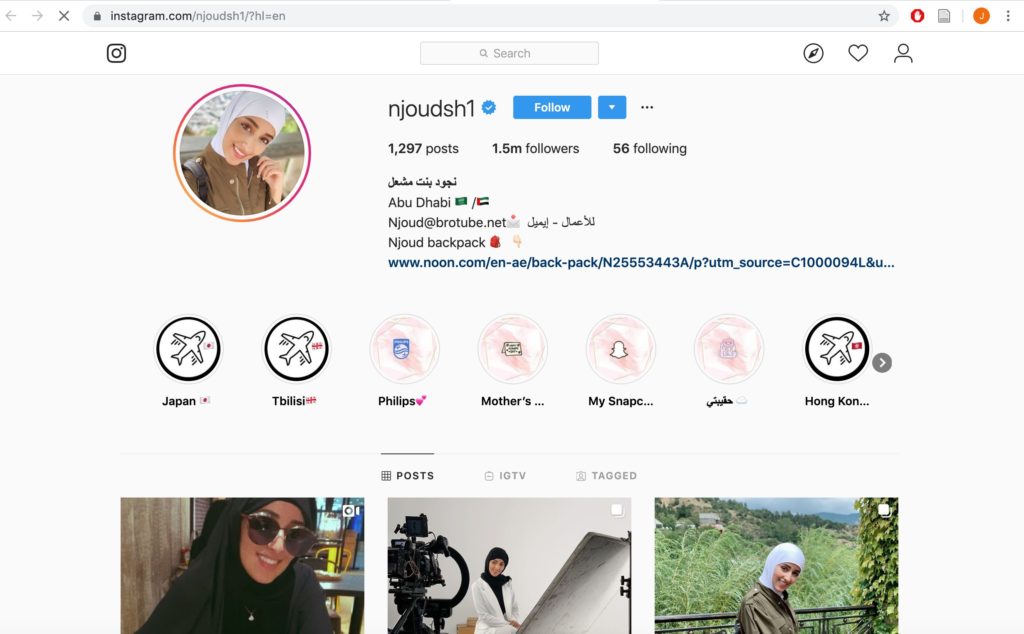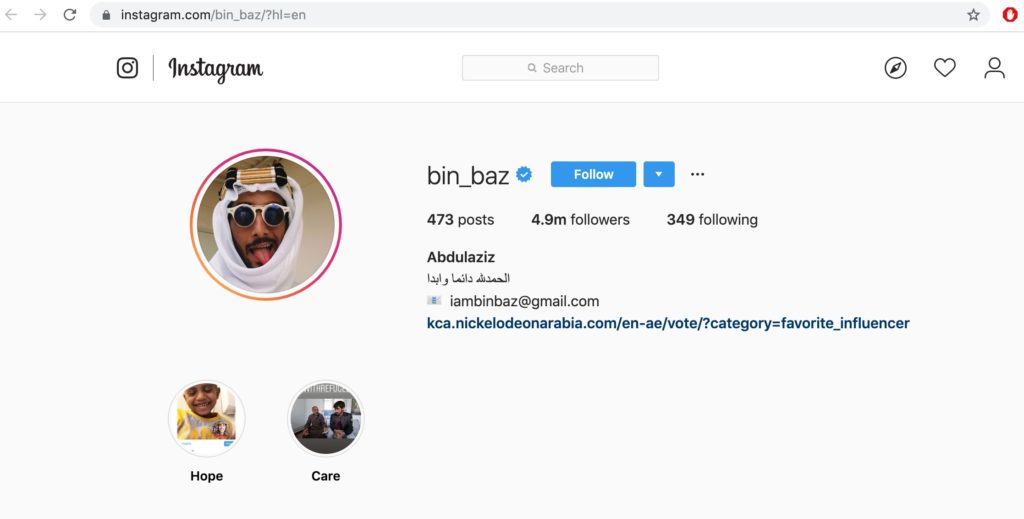
In the business of online marketing in the Middle East, our company frequently receives questions about Arabic domains. How do Arabic domains work? What is their history? And most importantly, does my business need one? Marketers and online business owners need to understand how to effectively answer these questions as they relate to their businesses.
There are many unresolved questions and currently not enough information available on the Internet to answer them. As this is the first real guide that delves comprehensively into this topic, we hope to answer many of the burning questions you may have.
In this guide, we briefly cover aspects of the conversation around Arabic domains to help you be more informed and ultimately answer the question: Is this something your business needs?
Debate around international internet naming
As the Internet is an invention of the United States, it was initially developed to be used entirely in the Latin alphabet. In an internet address, there have traditionally only been 38 alphanumeric characters allowed: A to Z, 0-9, a hyphen, and a period.
This is extraordinarily limiting for many people as it is estimated that only about 2.6 billion people (36% of the world population) use the Latin alphabet. Otherwise, approximately 1.3 billion people (18%) use the Chinese script, approximately 1 billion people (14%) use the Devanagari script (India), approximately 1 billion people (14%) use the Arabic alphabet, and approximately 0.3 billion people (4%) use the Cyrillic script. If the Internet is truly supposed to be the world wide web, then shouldn’t it be accessible to everyone?
An English speaker can’t imagine the complexities in finding a Devanagari keyboard to merely log on to Facebook or access an e-commerce site. However, this is a reality for many with the Latin alphabet dominance on the Internet. Therefore, since the advent of the globalization of the Internet, people have wondered how they too can access the web in their languages. This debate of supporting multilingual alphabets and characters in domains and URLs has existed essentially since the creation of the Internet decades ago.
Back it up… what is a domain?
To understand this topic completely, it’s important to understand the basics. For a person to access a site with a computer, they must enter an address that will connect them. This address must be unique so computers know exactly where to find each other and everything else online. Many elements go into this address, but the domain is the most important part needed to access every internet site. Domains make every page posted on the internet unique and specific. Resulting from this complexity, many parts together make up what we know simply as a domain.
Traditionally, domain names are read right to left with each level separated by a dot. The bit furthest to the right is the Top Level Domain (or TLD); .COM, .ORG and .NET are all examples of top-level domains. The top-level domain for www.istizada.com is .com. However, there are more TLDs used for specific instances. Country code TLDs (ccTLDs) are for use in a specific country. For example, Germany is .DE, France is .FR, America is .US. Generic TLDs (gTLDs) represent a purpose, e.g. commercial is .COM, government is .GOV, education is .EDU and so on.
Arabic and the Internet, a background
As previously stated, an estimated 1 billion people (14% of the world) use the Arabic alphabet worldwide, putting it as the 5th most common language. The question of Arabic domain names was therefore important and became a working common interest point for many Arab countries.
Soon, a Working Group on Arabic Domain Names was formed under the larger umbrella of the Arab League. During their second-ever meeting, held in Cairo from the 7th to the 9th of May 2005, the leaders of this working group decided that this was a matter of interest in every country in the Arab League and the GCC Pilot Project for Arabic Domain Names was extended to include all members of the Arab League. Hence, the project was officially dubbed: “Arabic Domain Names Pilot Project” and had intranational official political representation.
Here were the main takeaways from the project:
Strategic Objectives
- To establish and implement Arabic domain names.
- To increase internet use in the Arab world by addressing linguistic barriers facing Arabic-speaking users.
- To promote the use of the Arabic language and to increase the Arabic content on the Internet.
- To promote Arab cultural identity on the Internet.
Short-Term Objectives
- To make the Internet easier to use for native Arabic speakers.
- To gain experience and knowledge of using Arabic domain names and share it with the Internet community.
- To test the implantations of Arabic domain names based on the guidelines drafted by the Arabic Team for Domain Names.
- To build local awareness about Arabic domain names.
- To develop necessary tools required from Arabic domain names and DNS.
- To develop the required policies and guidelines that help to achieve the above objectives.
Many Arab countries throughout the region became invested in this topic. Here are the initial countries that signed on to this mission and their agencies invested in finding a solution:
- The United Arab Emirates with the United Arab Emirates Network Information Center
- Saudi Arabia and the Saudi Network Information Center
- Qatar and Internet Qatar
- Oman and Oman Telecommunications Company
- Palestine and the Ministry of Telecom and IT
- Egypt and the Ministry of Communications & Information Technology
- Tunisia and the Tunisian Internet agency
- Syrian and the Syrian Internet agency
- Jordan and the National information technology center
- Morocco and anrt.ma
- Libya and http://www.ltt.ly.
Beginning of Arabic Domains
To begin to respond to these burgeoning questions of addresses on the Internet, the Internet Corporation for Assigned Names and Numbers (ICANN) was formed in 1998 as a “not-for-profit public-benefit corporation with participants from all over the world dedicated to keeping the Internet secure, stable and interoperable. It promotes competition and develops policy on the Internet’s unique identifiers.” Through its coordination role of the Internet’s naming system, this group has an important impact on the expansion and evolution of the Internet.
In 2009, ICANN announced it would permit the registration of top-level domain names written in local languages and alphabets rather than solely Latin. In the first week of May 2010, these first Arabic Internet addresses officially went live. This milestone was the first major change to the domain name system since its creation in the 1980s. “Introducing Arabic domain names is a milestone in internet history,” Egyptian Communication and Information Technology Minister Tarek Kamel said in a statement. “This great step will open up new horizons for e-services in Egypt” as well as boosting the number of online users and enabling Internet service providers to enter new markets by “eliminating language barriers.”
Since this beginning, several countries have applied and received these top-level domain names in languages such as Arabic, Chinese, and Cyrillic. In the Middle East, Qatar, Syria, Yemen and several others were able to register the name of their own country as a top-level domain name in Arabic to allow individuals to register Arabic domain names under this extension.
شبكة became the world’s first Arabic TLD .شبكة is loosely translated as a word for the Internet, making sense for domain extension for Arab websites. For practical measures, شبكة is short and memorable and only takes four characters to type on an Arabic keyboard. Domain names in Egypt can now include .masr, (Masr is Egypt’s name in Arabic). However, Egypt also decided to keep its “.eg” suffix in the Latin alphabet.
ICANN chief executive Rod Beckstrom said the new native-script domains will help make the World Wide Web even more global. “It is a very big move. The Internet has been around roughly for four decades, and this is the first time that domain names are opening up to people’s native tongues and scripts,” Beckstrom says, “So for the many people in the world that speak Cyrillic, or Arabic-based languages or Chinese-based languages, this is very significant.”
Initial Hype and Popularity
When these Arabic domains were officially released, people all over the Middle East and beyond were thrilled about their potential. For once, they felt like the Internet was expanding to be accessible to them. A large number of Arabic domains were immediately bought by eager business people all over the Middle East when they first launched.
Having an Arabic domain name has had substantial impacts for many, even more than the initial goals listed above, including:
- Branding is easier for many solely-Arabic speaking businesses
This one does not apply if you are trying to make a business in two different languages, but for those who are solely marketing to an Arabic audience, this has had a profound effect. Several Arabic sounds do not exist in the Latin alphabet, so butchered transliterations were happening, making it difficult to convey the actual name of the business in radio ads or by word of mouth. In fact, many places in the Middle East actually use Latin numbers in the place of Arabic sounds. This domain name appears a jumbled mess to anyone not familiar with this specific usage. With an all-Arabic domain, no longer were the days of Arabic speakers needing to print out English on their business cards, or deal with the horrible transliteration.
- Websites are relevant and easy to remember
In a similar vein to the previous one, if a non-English speaker hears your English domain name, it is hard to commit to memory. How would they know how to use the Roman alphabet to spell your domain name? In many cases, this becomes a customer lost because the name goes in through one ear and out through the other. If it is a recognizable word in their language, it’s easier for them to remember and find your site!
- More domains options
Domain names in English can be EXPENSIVE. Especially short, simple ones with common words. Many sites and businesses are after those that you can easily commit to memory. Since the advent of Arabic domain names, it became incredibly easy to snatch up names that would be long gone in the Roman script
- In some cases, improved Search Engine Optimization (SEO)
In many cases, because of the simple nature of many domain names being exactly what people would be typing to search, sites were being found easier.
Problems with Arabic Domains
Although the emergence of Arabic domains initially promised a lot of positive aspects, it was soon clear that there are several large problems which make their implementation difficult and frustrating.
- Limited Access
Although this is an ironic thing to include because of the nature for which it included and enfranchised populations, it is similarly isolating to those who do not speak Arabic. Although the Latin alphabet is confusing and foreign to some, at least it provides people with commonality across the world. With domains in Arabic, it becomes even harder to reach people who do not have Arabic keyboards. Users of Cyrillic and Dravidian languages now have an even harder time accessing content with these domains.
A scathingly critical article published by the Omani times stated: “Imagine if an Omani university decided to adopt an Arabic domain name and required its staff and students to have email addresses written in the Arabic language. Unless this hypothetical university created an alternative English language alias for each user, it would be impossible for any of the users of these email accounts to share their addresses with someone who does not speak Arabic, which would have created a barrier for communication between these users and the rest of the world.”
- Confused with the right to left nature of Arabic
Because the Arabic language is read from right to left, the opposite of English, it becomes difficult to figure out what to do with this. How do you begin to share Arab URLs on social media, left to right? Right to left? How do you enter it into the search bar? So many questions, many that are unclear to those unfamiliar with the language.
- Differences in spelling in the Arabic language
Diacritics (Tashkeel) and Shadda are accent marks placed above or below Arabic letters in written language to produce proper pronunciation. They are used to differentiate different meanings for words, even with the same base characters. This gets confusing, even in Arabic books, because it means that even one omission of an accent can change the meaning of the word. Domains leave no room for top or subscript which means neither Tashkeel nor Shadda characters can be typed within. Additionally, the same letter takes a different form depending on where it is in the word. Letters will appear as three different shapes even though they have the same pronunciation.
- Questions of branding and advertising
The aforementioned Omani article writes of this issue, “No reasonable person would replace having a domain name written in English with one written in Arabic, and therefore anybody who would decide to acquire an Arabic domain name would only do so as a secondary alias for the website. This would double the domain name registration fees for the organization and would have serious implications on website branding and communication efforts.” If you are going to have the domain in English, are you also going to have it in Arabic? Are you going to list both in every online ad you make? It becomes difficult and confusing, especially to an inexperienced marketer.
- Difficulty to register domain names
A study published by ICANN in 2016 found there are many challenges for consumers who wish to buy domains, especially because of the lack of local providers and value-added services and limited nature of payment options.
Continued Criticisms
Contrary to an initial argument pushing for Arabic domain names and a common misconception, you do not need to have an internationalized domain name to publish content written in different languages.
We have had web content written in the Arabic language way before the Arabic domain names officially came out, and you continue to do so even with their existence now. Additionally, Middle Eastern internet users rely on search engines to find and access their desired content on the Internet and do not physically need to type in the URLs of websites into the bar.
What is the status of this situation now?
A study by ICANN regarding domains in the Middle East, name registration growth rates in the Middle East region as growing at a rate greater than 20% annually. A study found the number of domain names is predicted to double over the next three years. The study also found that in 2016, there were 2.9 million domain names registered in the region, with strong growth per year.
However, despite this substantive growth, the region still only accounts for 1% of the world’s registered domain names and 3.7% of global Internet users. As per the IDN World Report 2018, the language of web content is more definitely more varied and diverse than ever. The report states that Han, Latin, and Cyrillic scripts make up nearly 90% of all registered IDNs. Arabic is still yet to make a dent on the world scale.
This could be because people have just accepted the status quo and followed the saying, “If you can’t beat them, join them.”
If you look at the most prominent social media influencers in the Middle East, you will see that all have them have managed to build massive empires of influence and loyal followings across the region by using the tools that are available to them in the Latin script internet realm. You can see that despite being on these Latin script platforms, many of their captions and comments are in Arabic, representing both they and their followers have adapted to the situation at hand. Although it may not have been their first choice for the situation, they have made the most of it and it is truly impressive.


Examples of famous Middle Eastern influencers using both Arabic and English on their accounts.
So… should I get one?
The criticisms explored in this article have sworn many people off the idea of getting an Arabic domain, because the cons outweigh the pros. For those considering a shift towards an Arabic domain, you may want to take a step back and consider questions involved in this decision. Does your site already have strong Arabic language content? Is your site successful at SEO with key Arabic word searches? If these answers are yes, then the domain question is probably no. However, if your English URL is excessively complicated, has significant sounds not used or recognized in the Arabic language, or you are doing significant advertising via word of mouth or rapid, the answer could potentially be yes!
Of course, we never know what the future will hold… but as of now, it appears nothing will change any time soon. However, Istizada and our team of marketing professionals can help you determine exactly what the right decision is for you and your business.
Conclusion
In conclusion, this is an intricate, complex topic that involves questions of access, language, literacy, and connecting with others around the world. We hope you feel more informed about the history, the debate, and the various sides of the argument for and against the usage and proliferation of Arabic Domains. If you want to talk about how Arabic domains relate to you or your business, contact us today to find out how we can help.
Written by: Jennifer Lundt
Sources:
https://www.popsci.com/gadgets/article/2010-05/arabic-domain-names-go-live-introducing-non-latin-characters-internet/
https://www.eurodns.com/blog/dot-shabaka-goes-live
https://www.rferl.org/a/Cyrillic_Domain_Names_Become_Operational_On_The_Internet/2041131.html
https://www.101domain.com/arabic_idn_domains.htm
https://www.101domain.com/%D9%85%D9%88%D9%82%D8%B9.htm
https://www.dynadot.com/domain/%D8%B4%D8%A8%D9%83%D8%A9.html
https://eurid.eu/media/filer_public/29/95/29954607-557c-48e5-8cac-b17f8a38a0f9/idnworldreport2014_interactive.pdf
icann.org/en/system/files/files/alzoman-idn-kl-21jul04-en.pdf
http://research.domaintools.com/statistics/tld-counts/
stateofdigital.com/the-arabic-web/
http://cra.qa/en/news/qatar-receives-approval-arabic-internet-domains
https://www.itu.int/ITU-T/worksem/multilingual/presentations/S2-El-Sherbiny.pdf
https://www.wamda.com/2015/09/does-your-business-really-need-an-arabic-top-level-domain
https://www.smh.com.au/technology/arabic-domain-names-cleared-20100507-uhrh.html
https://www.itu.int/ITU-T/worksem/multilingual/presentations/S2-Al-Sabouni.pdf
https://www.icann.org/news/announcement-2010-11-02-en
https://www.icann.org/news/blog/linguistic-diversity-in-the-internet-root-the-case-of-the-arabic-script-and-jawi
https://thenextweb.com/me/2010/05/07/5-reasons-arabic-top-level-domains-good-business/
https://en.wikinews.org/wiki/Egypt_registers_first_domain_name_in_Arabic
https://www.ripe.net/participate/meetings/regional-meetings/dubai-2003/presentations/tld-mapping-for-the-arabic-domain-name-system
http://www.circleid.com/posts/20160301_report_finds_arabic_domain_names_ripe_for_growth/
https://www.icann.org/news/announcement-2016-02-26-en
https://pdfs.semanticscholar.org/d4a8/8b43bb688bb0ed6b6dc8ed3c2dc7975720f1.pdf


